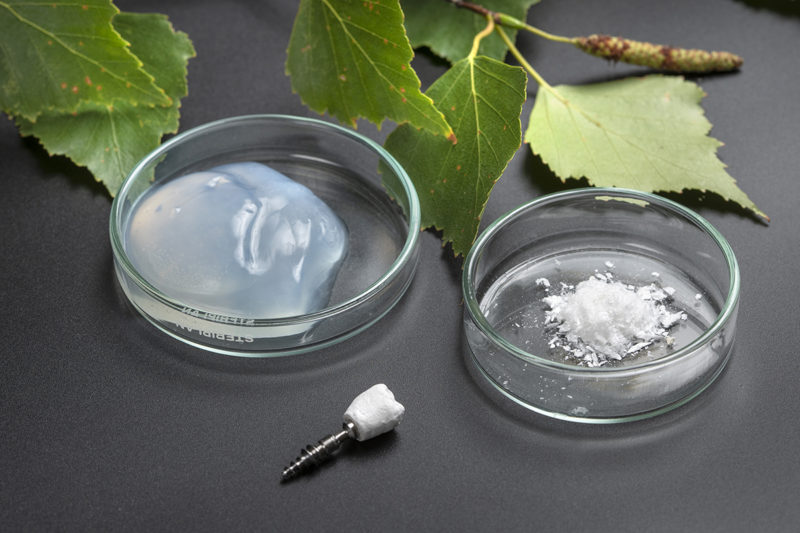
A biocomposite developed from the nanocrystals in birch pulp and proteins is stronger and lighter in weight than the technical ceramics currently used for dental crowns. Developed by a research team at VTT Technical Research Centre of Finland, the nanocomposite is used to make crowns for dental implants, with a structure resembling that of human teeth, as is reported by VTT.
The development project was a collaboration with the Nanyang Technological University in Singapore.
In addition to dental implants, future uses of the material include sports equipment, body armour, exoskeletons for aircraft and windscreen coatings
By modifying the proteins used it is possible to add properties to the material.
Research scientist Pezhman Mohammadi with his team drew inspiration from nature, using the structure of the dactyl club of the peachick mantis shrimp as model. The team successfully created a new material that can withstand repeated impacts without harm to the structure, reports VTT.
Life forms created by evolution are a source of inspiration for the researchers.
’These mantis shrimps are among the worst killers of the natural world,’ says Mohammadi.
The peachick mantis shrimps mainly live on hard-shell marine organisms, such as molluscs. To reach the edible part of the mollusc they have to break its shell.
’They smash their prey by throwing a pair of hammer-like dactyl clubs with tremendous speed and force.’
Earlier studies have shown that the clubs have a composite structure with organised layers.
’The club consists of a soft interior that provides energy dissipation and a hard impact-resistant exterior. While both layers are composed of similar building blocks, they differ in terms of their relative content, polymorphic form and organisation,’ Mohammadi explains.
The main elements are spirally organized chitin whiskers, or nanofibrils, attached to each other by proteins.
The research team duplicated the structure in the new composite, using cellulose nanocrystals and two sets of genetically engineered proteins. One protein set was designed to increase the strength of the material and the other to promote the growth of the crystals.
The next step will deal with the scalability of manufacturing the new biocomposite.
